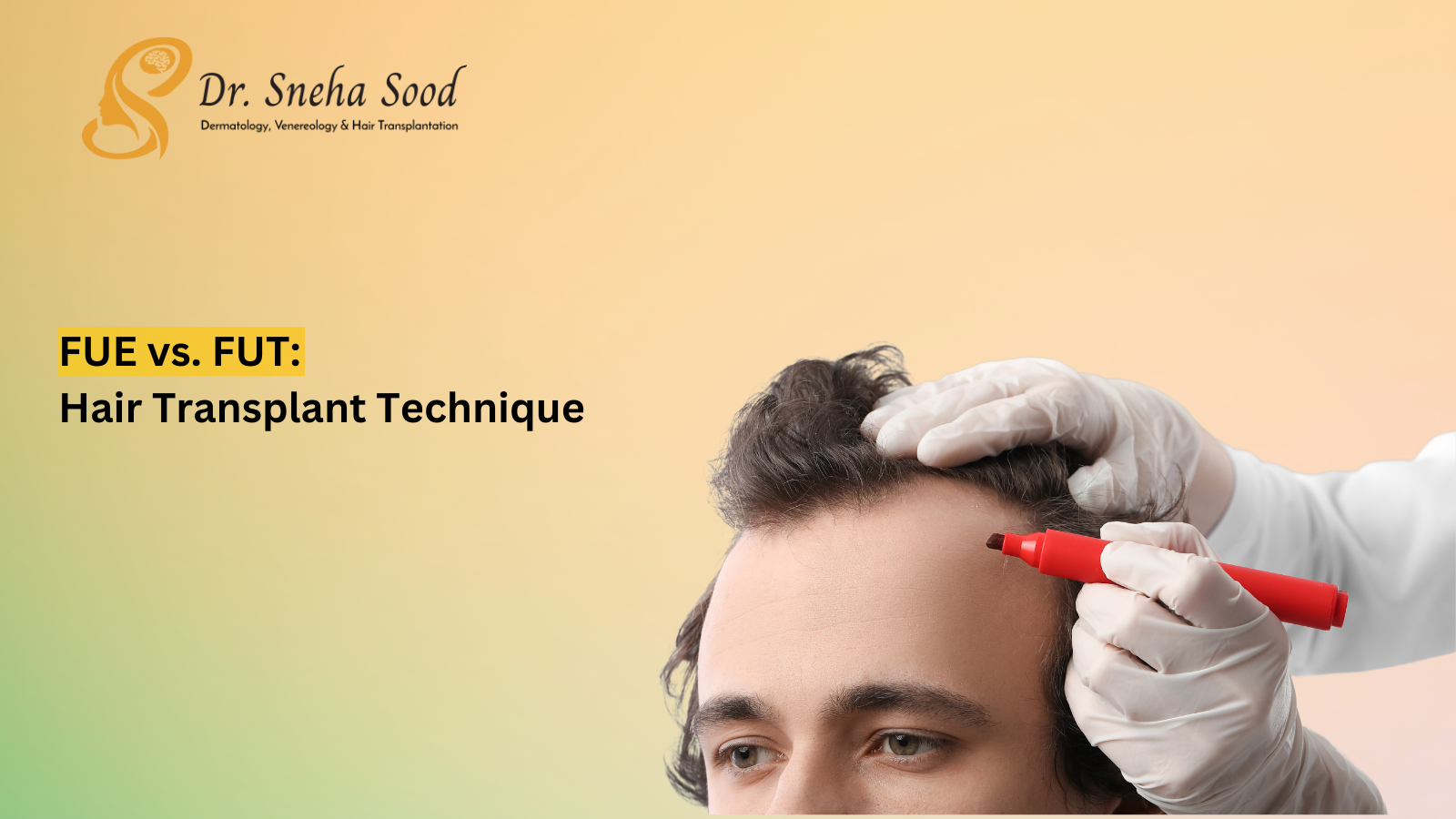



Imagine standing in front of the mirror, trying to style thinning hair or cover up bald spots that seem to expand each day. This scenario resonates with millions in India, where hair loss affects a substantial number of the population. The growing concern over hair loss has led to a surge in hair transplants, with India now ranking among the top countries for hair restoration procedures. In fact, the hair transplant market in India is expected to grow by over 25% by 2029, driven by the increasing demand for solutions to hair loss and the desire to regain confidence.
In hair transplantation, two primary techniques stand out: FUE (Follicular Unit Extraction) and FUT (Follicular Unit Transplantation). This blog aims to guide you through the differences between two primary hair transplant methods FUE and FUT, helping you make well-informed decisions on the best hair transplant technique for your specific needs.
Hair transplants were developed to restore hair to thinning or bald areas by moving healthy hair follicles from dense growth areas (usually the back or sides of the scalp). As a permanent solution, hair transplants offer natural-looking results, with transplanted hair growing over time. The two main techniques in hair transplantation are FUE (Follicular Unit Extraction) and FUT (Follicular Unit Transplantation), which follow the same principle of transferring healthy follicles but differ in extraction and implantation methods.
Understanding these techniques, their processes, and their unique benefits can help you make choices based on your hair loss pattern, lifestyle, and desired outcomes.
The FUE method is a minimally invasive hair transplant method that concerns the extraction of individual hair follicles from the donor area (usually the back or sides of the scalp) and transplanting them into the recipient area.
Hair in the donor area is trimmed to allow easy access to individual follicles.
The surgeon uses a small punch tool to extract follicles one by one.
Each follicle is carefully implanted into the recipient area.
FUE is ideal for those looking for a natural-looking hairline with minimal scarring and for people with active lifestyles or those preferring shorter hairstyles where scarring needs to be minimal.
FUT, also known as the strip method, involves removing a strip of skin with hair follicles from the donor area, which is then divided into grafts for transplantation.
FUT is beneficial for those with significant hair loss who require a more extensive number of grafts for higher density. It’s also ideal for individuals who don’t mind a fine linear scar that can be covered with longer hairstyles.
Choosing between FUE and FUT involves understanding the differences that might affect your results and experience:
Selecting between FUE and FUT depends on various factors:
A consultation with an expert can help assess these factors and guide you toward the most suitable option.
Being prepared for your hair transplant journey can help ensure a smoother experience. Avoid alcohol, smoking, and certain medications a week before the procedure, as advised by your surgeon. Expect local anaesthesia, and depending on the technique, the procedure may take 4–8 hours. Most patients can return home the same day. Following the surgeon’s post-care advice is crucial. Avoid harsh activities and protect the scalp from direct sunlight. Healing times differ between FUE and FUT, but generally, swelling and redness subside within a week.
Both FUE and FUT are effective hair transplant methods, with each offering unique benefits depending on individual preferences and hair restoration needs. Consulting with a hair transplant specialist will allow you to determine the best choice based on your hair type, lifestyle, and desired outcomes.
Are you thinking of undergoing a hair transplant but unsure which method is right for you? Dr Sneha Sood at Sood Aesthetics offers personalised consultations and advanced expertise in hair restoration to help you achieve your hair goals. Book an appointment with her and begin your journey towards a fuller head of hair with expert guidance.